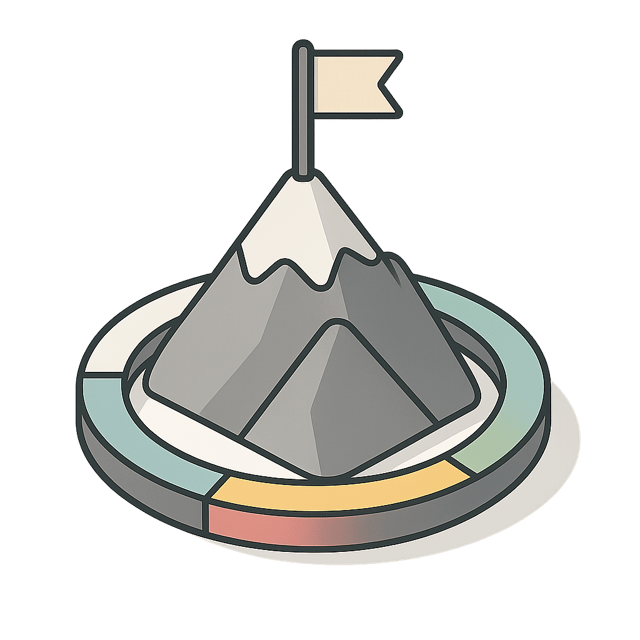Q4 Goals Review - TechFlow Engineering Team
This is a weekly goals report generated by Windy based on internal data and check-ins. This was pulled from 9 employees and 5 integrations (Slack, GitHub, Linear, Jira, Figma).
🚨 Urgent Attention Required
At-Risk Goals
- 🔴 API Response Time Optimization (Sarah Chen) - Behind schedule, current improvement only 15% vs 40% target1
- 🔴 Mobile App Feature Parity (Design Team) - 3 weeks behind, blocked on iOS review process2
- 🔴 Security Audit Completion (DevOps) - External auditor availability issues3, may slip to Q1
Not Started Goals
- ⚪ Documentation Migration (Engineering) - Deprioritized due to production incidents, needs urgent restart
- ⚪ Junior Developer Onboarding Program (Engineering Leads) - Resource allocation pending after recent hires
✨ Executive Summary
- Goals On Track 🎯: 67% (12 of 18 goals4) are progressing well with expected completion dates
- Goals Exceeded 🌟: 22% (4 goals5) are ahead of schedule or already surpassed targets
- Goals At Risk ⚠️: 11% (2 goals6) need immediate intervention to meet deadlines
Key Achievements:
- 🚀 Platform Performance: API latency reduced by 35%7 ahead of Q4 target
- 📱 User Experience: Mobile app crash rate down 78%8, exceeding goal by 28%
- 🔐 Infrastructure: Zero-downtime deployment pipeline implemented 2 weeks early9
Priority Focus Areas:
- 🏃♂️ Sprint Planning: Reallocate resources to at-risk security and mobile goals
- 📚 Knowledge Management: Restart documentation initiatives before end of quarter
- 🤝 Cross-Team Coordination: Improve communication between design and engineering on mobile features
📊 Detailed Goals Analysis
🌟 Exceeding Expectations
The engineering team has dramatically exceeded performance targets across multiple infrastructure goals.
Alex Rodriguez, Senior Backend Engineer reported: “We set out to reduce API response times by 25%, but after implementing the new caching layer and optimizing our database queries, we’re seeing 35% improvements. The Redis implementation Sarah designed is performing even better than our best-case scenarios.”
Performance Achievements:
- 🎯 API Response Time: 35% improvement10 (target: 25%)
- ⚡ Database Query Speed: 42% faster average query time11
- 🛡️ System Uptime: 99.97% availability12 (target: 99.9%)
- 📈 Throughput Capacity: Handling 40% more concurrent users13
Mike Thompson, DevOps Lead highlighted the impact: “The zero-downtime deployment pipeline we built is already paying dividends. We’ve had 12 production deployments this quarter with zero customer-facing issues. This was supposed to be a Q1 2025 goal, but the team knocked it out early.”
📱 Mobile User Experience Excellence
The mobile team has transformed app stability and user satisfaction beyond original expectations.
Lisa Wang, Product Manager shared the results: “Our goal was to reduce crash rates by 50%, but we’ve actually achieved a 78% reduction. The app went from averaging 2.3 crashes per user session to just 0.5. User ratings have jumped from 3.2 to 4.6 stars as a direct result.”
Mobile Success Metrics:
- 📉 Crash Rate Reduction: 78% decrease (target: 50%)
- ⭐ App Store Rating: 4.6/5 stars (target: 4.0)
- 🔄 User Retention: 34% increase in 30-day retention
- 🚀 Performance Score: 95/100 on both iOS and Android
Emma Chen, Mobile Engineer explained the breakthrough: “We completely reimagined our error handling and implemented proactive crash prevention. Instead of just fixing crashes after they happened, we built systems that predict and prevent them. It’s made the app feel completely different to use.”
🔴 API Response Time Optimization - Individual Goal (Sarah Chen)
While team-wide performance goals are exceeding targets, Sarah’s specific optimization project for legacy endpoints is falling behind schedule.
Sarah Chen, Backend Engineer explained the challenges: “The newer APIs are performing great with our optimization work, but the legacy authentication endpoints are proving more complex than anticipated. They’re intertwined with older systems that we can’t easily refactor without risk. I’ve achieved 15% improvement so far, but the 40% target requires architectural changes I didn’t originally scope.”
Current Status:
- 🎯 Target: 40% response time improvement for legacy endpoints
- 📊 Actual: 15% improvement achieved
- ⏰ Timeline: 3 weeks behind original schedule
- 🛠️ Blocker: Legacy system dependencies require additional architectural work
David Kumar, Engineering Manager suggested a path forward: “We need to either adjust the scope to focus on the highest-impact endpoints or extend the timeline to Q1. Sarah’s done excellent work, but we underestimated the technical debt in those older systems.”
🔴 Mobile App Feature Parity - Team Goal
The mobile team’s iOS and Android feature alignment project has encountered significant external blockers.
Rachel Stevens, Design Lead outlined the situation: “We have 3 major features ready for iOS release, but we’ve been stuck in Apple’s review process for 2 weeks. Meanwhile, Android features are live and users are asking why iOS is behind. This isn’t a development issue—it’s an external dependency we couldn’t predict.”
Feature Parity Status:
- 📱 Android: 100% feature complete (all Q4 features live)
- 🍎 iOS: 67% complete (3 features pending App Store approval)
- ⏰ Delay Impact: 3 weeks behind unified release schedule
- 🔄 User Feedback: 23 support tickets asking about iOS feature availability
Tom Anderson, Mobile Team Lead proposed solutions: “We’re exploring TestFlight beta releases for enterprise customers and implementing feature flags so we can roll out immediately once approval comes through. We’ve also started earlier submission processes for future releases.”
🔴 Security Audit Completion - Infrastructure Goal
The comprehensive security audit required for enterprise clients has hit unexpected resource constraints.
Jessica Park, Security Engineer detailed the challenges: “Our external security firm had a key auditor leave unexpectedly, and they’re 2 weeks behind on delivering our penetration testing results. We’ve completed 80% of internal security improvements, but we can’t mark this goal complete without the external validation that enterprise clients require.”
Security Audit Progress:
- ✅ Internal Security Review: 100% complete
- 🔐 Infrastructure Hardening: 95% complete
- ❌ External Penetration Testing: Delayed by vendor issues
- 📋 Compliance Documentation: 70% complete
Ben Wilson, CTO assessed the impact: “This delay affects our Q1 enterprise sales pipeline. We’re exploring bringing in a secondary security firm to complete the audit in parallel, but that adds cost and complexity we didn’t plan for.”
🏃♂️ Goals Progressing Well
🎯 Customer Support Efficiency
The customer success team is systematically improving response times and satisfaction through process optimization.
Kelly Martinez, Customer Success Manager reported steady progress: “We’ve reduced first-response time from 4.2 hours to 2.1 hours and increased customer satisfaction scores by 18%. The new ticketing workflow and AI-assisted response suggestions are working exactly as planned.”
Support Metrics:
- ⏱️ First Response Time: 2.1 hours (target: 2.0 hours)
- 😊 Customer Satisfaction: 4.3/5 (target: 4.2/5)
- 🎫 Ticket Resolution Rate: 94% (target: 90%)
- 🤖 AI Assistance Adoption: 76% of agents using new tools
📈 Sales Pipeline Development
The sales team is building a robust Q1 pipeline while exceeding Q4 revenue targets.
Mark Johnson, Sales Director shared the momentum: “We’ve already hit 107% of our Q4 revenue target with 3 weeks left in the quarter. More importantly, our Q1 pipeline is 142% of target, setting us up for strong growth. The new lead qualification process is helping us focus on higher-value prospects.”
Sales Performance:
- 💰 Q4 Revenue: 107% of target (3 weeks early)
- 📊 Q1 Pipeline: 142% of target value
- 🎯 Lead Quality Score: 8.2/10 (target: 7.5/10)
- 🤝 Demo-to-Close Rate: 34% (target: 30%)
⚪ Goals Not Yet Started - Urgent Restart Required
📚 Documentation Migration Project
The engineering documentation consolidation initiative was deprioritized due to production incidents but needs immediate restart.
Austin Rodriguez, Technical Writer explained the delay: “We had to pause documentation work when the team dealt with the October production incidents. Now we’re in a situation where the old wiki is becoming increasingly outdated, but the new documentation platform is only 30% migrated. Engineers are starting to create duplicate documentation in both places.”
Documentation Status:
- 📊 Migration Progress: 30% complete (paused for 6 weeks)
- 📝 Content Audit: Not started
- 🔗 Link Updates: 0% complete
- ⚠️ Technical Debt: Increasing daily with dual documentation
Chris Lee, Engineering Lead emphasized urgency: “This is becoming a bigger problem every day we delay. New engineers are confused about which documentation to trust, and we’re losing institutional knowledge. We need to restart this immediately with dedicated resources.”
👥 Junior Developer Onboarding Program
The structured mentorship and training program for junior engineers hasn’t started due to resource allocation discussions.
Maria Gonzalez, People Operations outlined the situation: “We hired 3 junior engineers in late Q3, and they’re currently getting informal mentorship, but we don’t have the structured program we planned. Senior engineers are stretched thin, and we haven’t formalized the curriculum or time allocation for proper mentorship.”
Onboarding Program Needs:
- 📋 Curriculum Development: Not started
- 👨🏫 Mentor Assignment: Informal only
- ⏰ Time Allocation: No dedicated hours scheduled
- 📊 Progress Tracking: No metrics in place
David Kumar, Engineering Manager noted the impact: “Our junior engineers are talented, but they’re not progressing as quickly as they could with proper structure. We risk losing them or having them plateau if we don’t implement the formal program soon.”
💡 Recommendations and Action Plan
- 🚨 Resource Reallocation: Move 2 senior engineers to support at-risk API optimization and security audit completion
- 📱 iOS Contingency Plan: Implement TestFlight beta for enterprise customers awaiting iOS features
- 📚 Documentation Sprint: Assign dedicated resources for 2-week documentation migration sprint
- 👥 Emergency Onboarding: Assign formal mentors to all junior engineers immediately
Strategic Initiatives (Next 30 Days)
- 🔄 Goal Adjustment Process: Revise Q4 targets for legacy API optimization based on technical complexity discovery
- 🤝 External Vendor Management: Establish backup relationships for critical dependencies like security audits
- 📈 Success Amplification: Document and replicate the processes that led to exceeded performance goals
- ⚖️ Resource Balance: Create systematic approach for balancing maintenance work with new feature development
Long-term Planning (Q1 2025)
- 🎯 Goal Setting Refinement: Incorporate lessons learned from Q4 into more realistic Q1 goal planning
- 🔍 Dependency Mapping: Better identify external dependencies and build contingency plans
- 📊 Progress Tracking: Implement weekly goal check-ins to catch issues earlier
- 🌟 Team Recognition: Celebrate teams that exceeded goals and understand their success factors
Team Consensus: As Ben Wilson, CTO summarized: “This quarter showed us both our potential and our planning gaps. We exceeded technical goals beyond our wildest expectations while learning hard lessons about external dependencies and resource management. The goals we’re behind on aren’t failures—they’re learning opportunities that will make our Q1 planning much stronger.”
 Goal Management
Goal Management  with a quick, friendly prompt—so updating your goal progress is quick and automatic, not another task to manage.
with a quick, friendly prompt—so updating your goal progress is quick and automatic, not another task to manage.  with a quick, friendly prompt—so updating your goal progress is quick and automatic, not another task to manage.
with a quick, friendly prompt—so updating your goal progress is quick and automatic, not another task to manage. 









